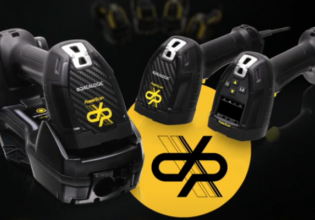The Importance of CSA and UL Compliance
Learn about Canadian Standards Association (CSA) and Underwriter Laboratories (UL) compliance and when/where you’ll need to have them.
Canadian Standards Association (CSA) and Underwriter Laboratories (UL) are two of many respected expert certification organizations. They are responsible for certifying the many different manufacturers and their products according to their various standards.
The CSA is Canada-based, while the UL is U.S.-based. Both are recognized by their respective Standard Development Organization (SDO) as a certification company to certify the products. In addition to the certification, these organizations can also perform different International Organization for Standardization (ISO)-related standardization checks such as quality management systems (QMS) and environment management systems (EMS).

These certifications affect the types of components and products that engineers choose to implement in their facilities.
Both UL and CSA are nationally recognized testing laboratories (NRTL) in the U.S. NRTL are certification bodies mandated to perform certification activities of products and verify these products according to the Occupational Safety and Health Administration (OSHA) electrical standards.
Countries Accepting CSA and UL Certifications
Both UL and CSA are supported globally by their local experts in major regions. This local presence works in addition to their respective head offices in the U.S. and Canada.
The representatives in their head offices and local offices visit the manufacturers and facilities regularly. They monitor and analyze the process for deviation from the approved procedures. If a discrepancy is found, they immediately initiate action according to their redefined rules and regulations.
Global Impact
UL and CSA are accredited and accepted worldwide. The standards developed by these two certification bodies are applied in many regions without further testing and verification by their local bodies. The ISO also authorizes them to conduct ISO certification as third-party consultants. As a result, ISO is the most accepted and followed standard in industries all around the world.
UL has a presence in almost all important regions such as Europe, Asia Pacific, and the Middle East. This makes their certification process more secure and reliable. The CSA also has an international presence in major industrial junctions such as Europe and Asia.

An engineer monitoring a manufacturing process at the site to ensure all systems are running accordingly.
The local presence allows them to monitor the product manufacturing process directly at the manufacturing site, which increases their certification credibility. The certification resembles the most accurate ground conditions of the product manufacturing process.
United States, Canada, and South America
Both UL and CSA are mandated for the U.S. and Canadian markets and are accredited by the relevant country’s standardization body. Therefore, manufacturers in both countries can choose from the UL or CSA certification and will not face a penalty when certified from UL or CSA.
UL and CSA mark their product’s certification by specialized markings, indicating their certification status for a particular market.
UL Markings
UL’s marking is mandatory for both the U.S. and Canadian markets. However, some marking are country-specific and cannot be used other than their intended markets. In addition to the country-specific markings, UL also offers combined keeping for both U.S. and Canadian markets.
It also offers combined marking for U.S., Canada, and European markets. However, for Central and South American markets, markings are different. For instance, the UL NOM mark for Mexico, the UL CO Colombia mark, the UL-BR mark / UL-BR INMETRO mark for Brazil, or the UL-AR S mark for Argentina.
CSA Markings
CSA also offers markings for the U.S. and Canada, allowing the product to enter the relevant markets. Some markings are combined for both U.S. and Canada markets, while some are specific for the U.S. only.
UL and CSA Compliance
Let's take a look at some of the key differences between these two certifications.
Underwriter Laboratories (UL)
Certification with the UL requires the manufacturer to comply with the requirements and agree to put a relevant mark on their products.
Suppose a facility fails to comply with the UL certification procedure and requirements. In that case, it agrees to share this information with its many partners and subcontractors working in other parts of the world regarding its failure. The UL prevents the manufacturer from using the marking on its product by notifying in writing before the termination date. The manufacturer should abide by all these termination policies.

Manufacturers may have to revise their procedures based on certification requirements. Image used courtesy of Siemens
Suppose the UL requires the manufacturer to revise its procedures. In that case, the manufacturer can use the certification and markings; then, it submits the revised product design if UL finds that the revised plan is sufficient following the UL standards. In product revision activity, the manufacturer must pay testing and examination fees, as when the manufacturer paid at the first time of submission.
If the UL concludes that the manufacturer fails to fulfill requirements or cannot comply with the requirements, the manufacturer must stop using certification markings after the termination date.
Canadian Standards Association (CSA)
The products sampled in the facility are sent to the CSA for testing. The testing is performed following the relevant standards. If the product proves compliance with the standards, the certification is awarded, and the facility is allowed to use a relevant marking on its product.
Additionally, the UL and CSA work together. Therefore, UL can test and certify CSA compliance, and vice versa. Manufacturers have their pick of using either UL or CSA certifications. To keep in compliance with these certifications, ensure your products are up-to-date and any revisions are sent to the organizations for testing.






